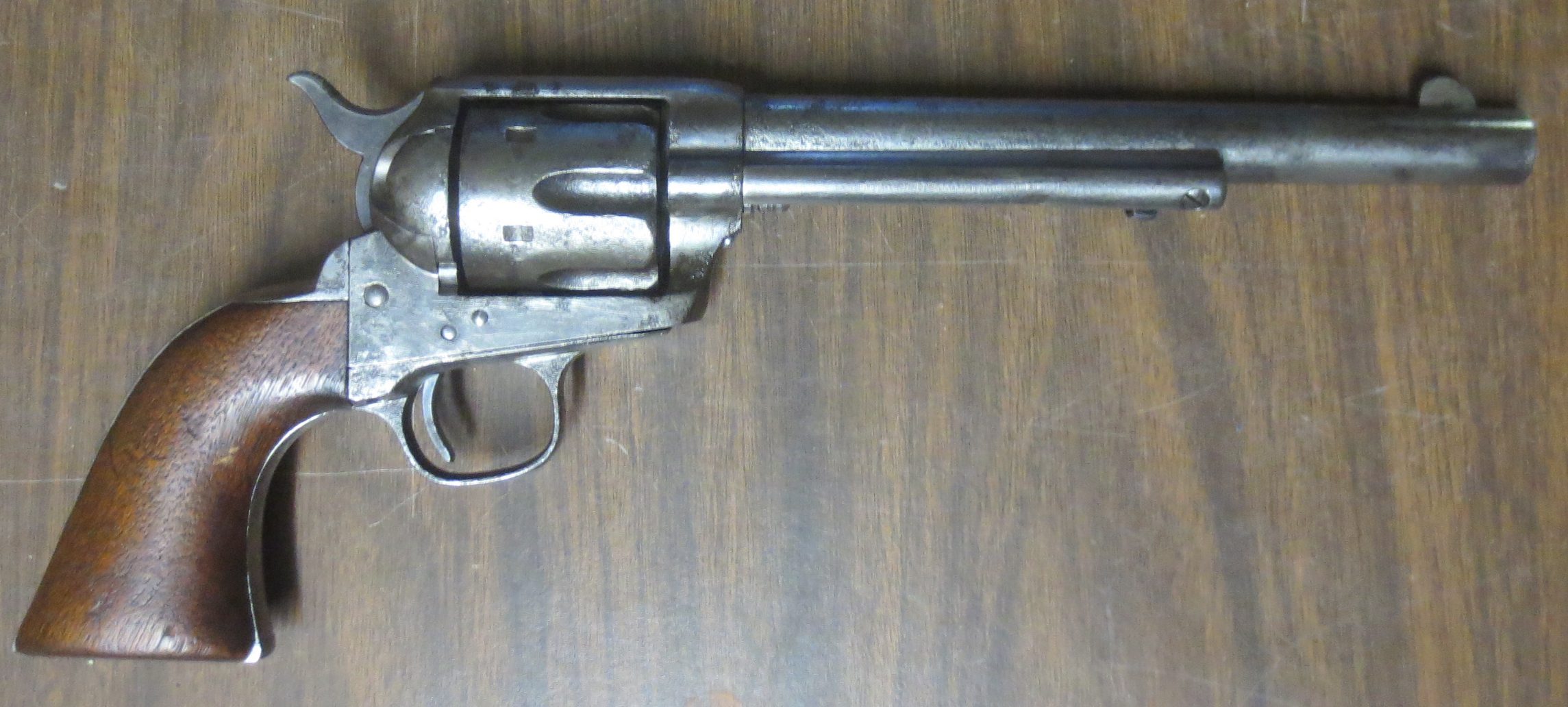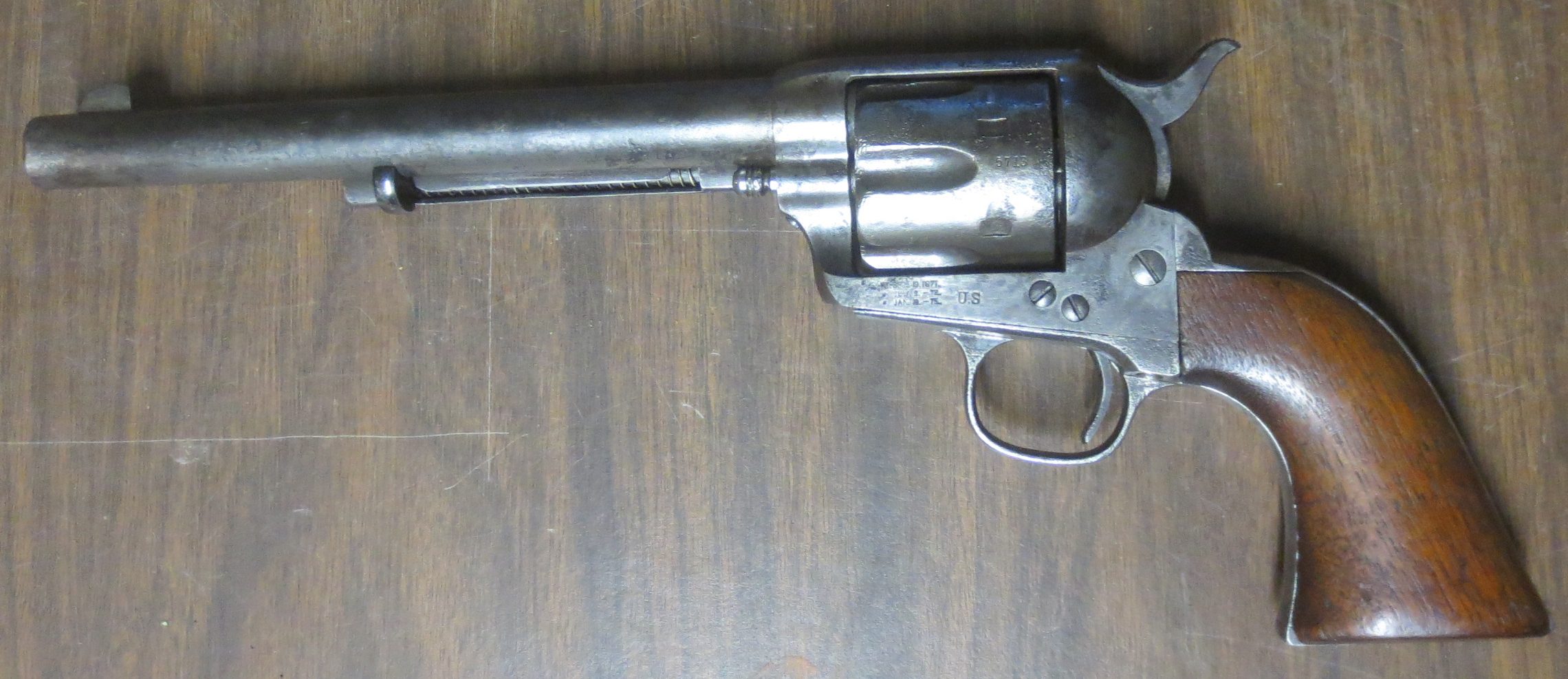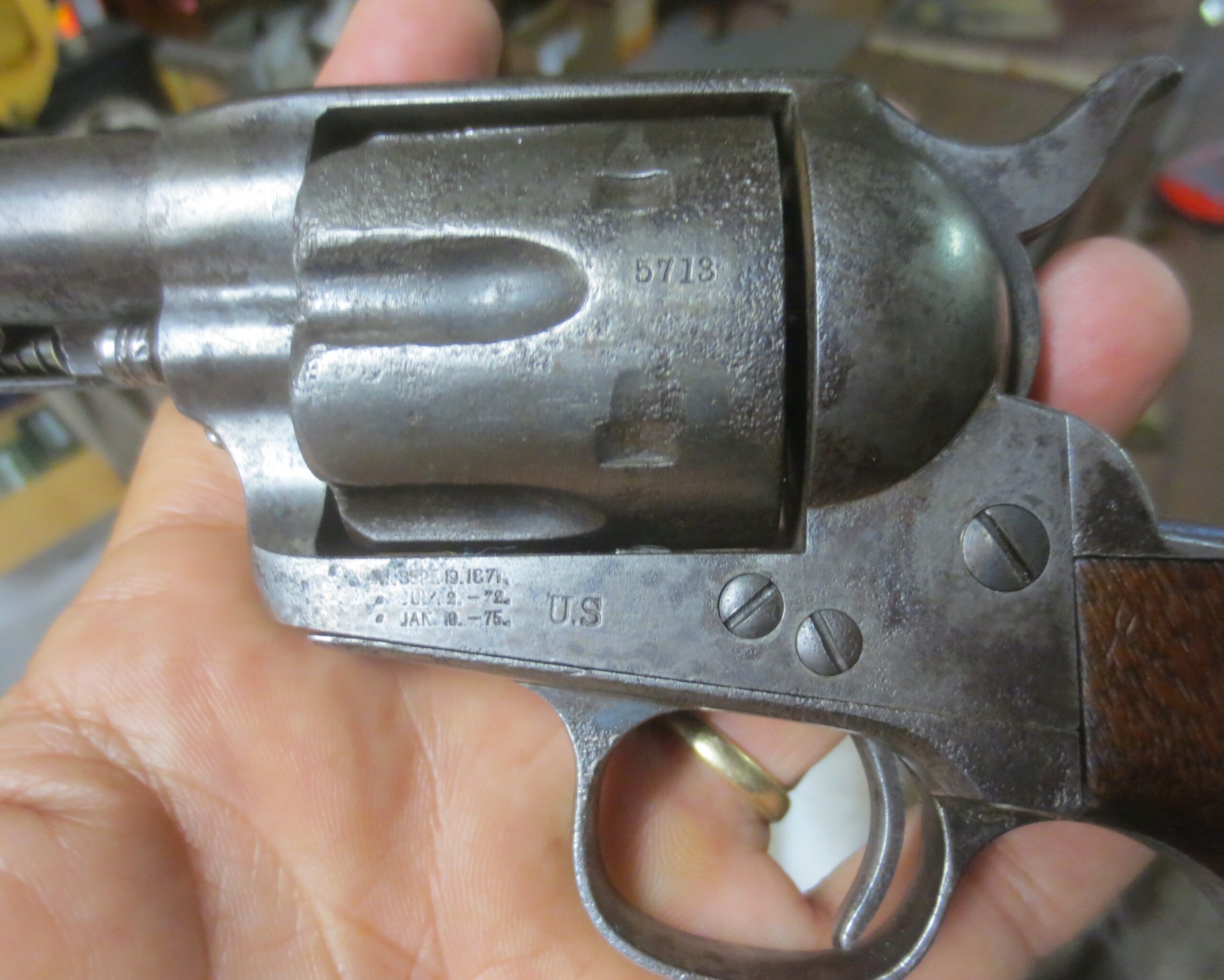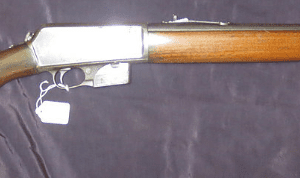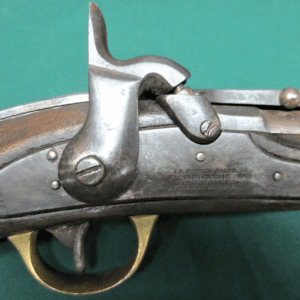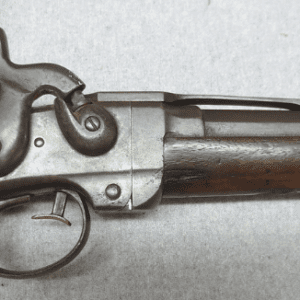Description
The Colt Single Action Army (also known as the SAA, Model P, Peacemaker, or M1873) is a single-action revolver metallic cartridge handgun. It was designed in 1872 for the U.S. government service revolver trials of 1872 by Colt’s Patent Firearms Manufacturing Company and was adopted as the standard-issue pistol of the US Army from 1873 until 1892.
The Colt SAA has been offered in over 30 different calibers and various barrel lengths. Its overall appearance has remained consistent since 1873. The revolver was dubbed as “Colt Peacemaker” and is a famous piece of Americana, as it was popular with the military, ranchers, lawmen, and outlaws alike since its creation and due to its association with the American Wild West era.
The original length of the barrel, as issued to the U.S. Cavalry, was 7 1/2 inches with an overall length of 13 inches. As with most all military purchased SAA weapons, it is chambered in .45 Long Colt.
This particular handgun was manufactured in 1885 under direct US Army contract. All visible numbers match except the cylinder, which is a few digits away (xx5713). It is stamped 115913 on the frame, triggerguard and buttplate. Both oval military inspector cartouches, though worn from field use, are visible in the walnut grip and the inspector stamp of DFC is crisp (David F. Clark). Clark inspected a total of 13,000 Single Action Army revolvers from 8 government different contracts during his 8-year tenure at Colt from 1880 to 1887.
The action and timing is exceptional, the bore is above average and the barrel marking is visible, as is the US on the left side of the frame and the patent date stampings. The barrel is full length and the front sight is unaltered. Overall, the weapon exhibits a very uniform mellow gray brown patina with scattered areas of light pitting as shown in the images.
This is a fantastic original US Cavalry Indian Wars era gun, inspected and approved for military service by David F. Clark in 1885, and in service for the last decade of serious Indian War service. It was in active use during the Apache Wars (1880-1886), the Ghost Dance War (1890-91), the Pine Ridge Campaign (1890-91) the Wounded Knee Massacre (December 29, 1890) as well as scores of other smaller engagements. Many martial single actions also saw use with volunteer regiments during the Spanish-American War.
The M1873 was THE handgun that “won the West” and original examples are incredibly rare. Other than for a few period replaced screws, the weapon overall is absolutely as honest as they come. It is not unusual for parts like cylinders to not match on these weapons as parts often got switched around during routine cleaning in the soldier barracks. If you want a REAL example of how the West was won, look no further!
Brief History: 8th US Cavalry Formed in 1866
From October 1870 to July 1874, Troops “C”, “G”, “I” and “K” of the 8th Cavalry were stationed at Fort Selden, New Mexico, a territorial fort established on the Rio Grande at the present site of Radium Springs, New Mexico. Their primary mission was to protect the settlers and travelers of the Mesilla Valley and San Augustin Pass from the Mescalero Apaches and other bands. The location of the fort was an ancient Indian campground and a crossing point for Spanish caravans headed across the Jornada del Muerto (“Journey of Death”). In conjunction with the encampment at Fort Selden, Regimental Headquarters and three companies of the 8th Cavalry were assigned to Fort Union, New Mexico, under the command of Major William Redwood Price. A campaign was organized to enter the Llano Estacado, the Staked Plains area of the Texas Panhandle, a favorite haunt of bands of Comanches and Kiowas. Departing into the field in August 1874, the 8th Cavalry campaigned into the early months of 1875 before the Southern Plains were finally considered free of the Indian threat and Fort Union settled into a period of reservation watching, holding its troops in readiness for future troubles. The regiment remained in New Mexico performing the same duties until July, 1875, when it marched to Texas. On 31 December 1875 soldiers of the regiment were engaged in a brawl with members of the John Kinney Gang in a Las Cruces, New Mexico saloon in which two died and three were injured. The 8th periodically was engaged in the Apache Wars in southern New Mexico; in November–December 1877 Alsate’s Mescaleros clashed twice with 8th Cavalry troops: on 30 November, companies A and K, respectively led by capt. A.B. Wells with Lt. F.E. Phelps, and by Capt. S.B. Young with Lt. John L. Bullis, trespassed the Rio Grande border running after Alsate’s band in the Sierra Madera del Carmen, Mexico, killing or wounding some Apaches, destroying the camp and catching some horses, donkeys and mules; on 4 December, capt. Young, with troop K, and Lt. Bullis, with a detachment of Negro-Seminole scouts, after chasing the Chisos for several weeks, attacked the Apache group led by Alsate and his sub-chiefs Zorrillo (Chisos Limpia Mescaleros) and Colorado (probably the chief of a smaller Lipan band joint to the Chisos Mescaleros, and likely to be identified with Avispa Colorada, connected to Alsate and Carnoviste in 1874); Alsate led his people to Chihuahua. On 19 December 1885 an officer and 4 enlisted men were killed by Apaches near Alma, New Mexico.
In May 1888, the regiment prepared for the longest march ever taken by a cavalry regiment. With the increased number of settlers moving to the Northwest United States, the regiment was ordered to march more than 2,600 miles (4,200 km) to its new regimental headquarters located at Fort Meade, South Dakota and station at Fort Keogh, Montana. Some of its march was along the famous Santa Fe Trail in New Mexico, near which carvings on large boulders and trees still gives mute testimony of the troops on the longest of all trails.
